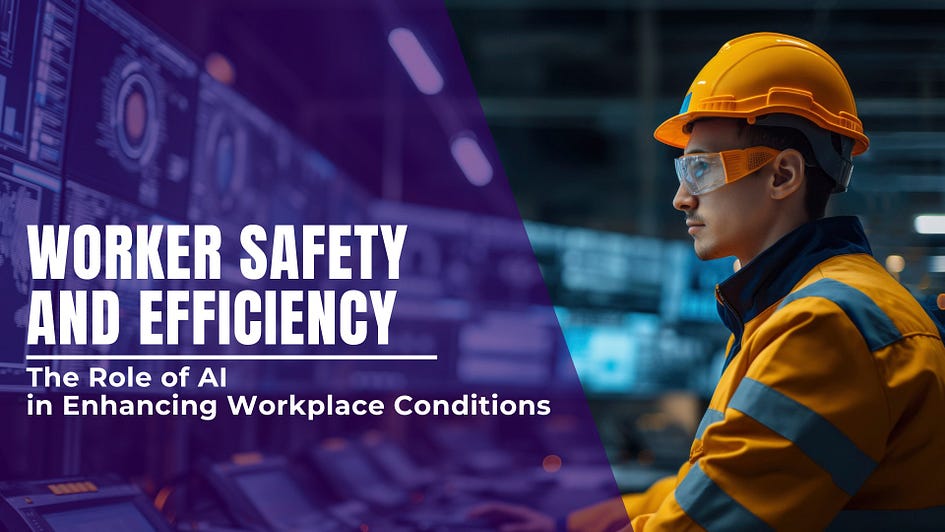
In the fast-paced world of manufacturing, where every second counts, ensuring worker safety while maintaining efficiency is crucial. With the advent of artificial intelligence (AI), we have a powerful ally in creating safer and more productive workplaces. Let’s delve into how AI is transforming worker safety and efficiency in manufacturing environments.
Understanding the Manufacturing Landscape
Manufacturing isn’t just about machinery and assembly lines; it’s about the people who operate them. The industry is notorious for its high-risk environment, where workers face numerous hazards daily. From heavy machinery and high-voltage equipment to hazardous materials, the potential for accidents is ever-present. As professionals on the ground, we know that even the smallest lapse in safety can lead to severe consequences. That’s why adopting innovative technologies, especially AI, is critical for the future of manufacturing.
AI-Powered Safety Solutions
AI is revolutionizing how we approach safety in the workplace. By leveraging advanced algorithms and data analytics, manufacturers can predict and prevent potential hazards. Here are some ways AI is enhancing worker safety
1. Predictive Analytics
One of the standout features of AI is its ability to analyze vast amounts of data quickly. By collecting information from various sources — like equipment sensors, employee reports, and historical incident data — AI systems can identify patterns and predict potential safety issues. For example, if a particular machine has a history of malfunctions, AI can alert operators to take precautionary measures before a breakdown occurs. This proactive approach significantly reduces the risk of accidents and injuries on the shop floor.
2. Personal Protective Equipment (PPE)
AI technologies, such as machine learning and computer vision, can be employed to monitor workplace conditions in real time. For instance, AI-powered cameras can detect unsafe behavior, like a worker not wearing appropriate personal protective equipment (PPE) or standing too close to dangerous machinery. This immediate feedback allows supervisors to intervene before accidents happen. Real-time monitoring fosters a culture of safety, as employees become more aware of their surroundings and take accountability for their actions.
3. Automated Safety Inspections
Traditionally, safety inspections are a manual process that can be time-consuming and prone to human error. AI can streamline this process by automating inspections using drones or robotic systems equipped with cameras and sensors. These AI-driven inspections can quickly identify potential hazards, such as equipment malfunctions or unsafe working conditions. By reducing the time spent on inspections, manufacturers can focus on improving operational efficiency while ensuring a safe environment for their workers.
Enhancing Efficiency Through AI
While safety is paramount, we cannot overlook the importance of efficiency in manufacturing. AI not only enhances workplace conditions but also boosts productivity. Here’s how:
1. Optimizing Operations
AI can analyze workflow data to identify bottlenecks in production. By understanding where delays occur, manufacturers can implement changes that streamline processes, reduce downtime, and improve overall efficiency. For instance, AI can suggest the best times for maintenance, ensuring machines are serviced without disrupting production schedules. This optimization directly contributes to a safer environment by minimizing the risks associated with rushed operations or equipment failures.
2. Smart Scheduling
In a manufacturing setting, managing schedules is a complex task, especially when factoring in worker shifts, machinery availability, and project deadlines. AI can assist in creating smart schedules that take all variables into account, ensuring that workers are assigned tasks that align with their skills and the machinery’s capabilities. This not only enhances efficiency but also reduces the likelihood of accidents caused by overworked or fatigued employees.
3. Training and Development
AI-driven training programs can provide tailored learning experiences for workers. By analyzing individual performance data, AI can identify skill gaps and recommend training modules that address specific needs. This approach ensures that workers are adequately trained to handle machinery and operate safely, reducing the chances of workplace incidents.
Conclusion
As we navigate the complexities of the manufacturing landscape, the integration of AI into our safety and efficiency protocols is no longer a luxury but a necessity. By harnessing the power of AI, we can create safer workplaces that prioritize the well-being of workers while also driving operational excellence. The collaboration between humans and AI will pave the way for a brighter, safer future in manufacturing, where both worker safety and productivity can thrive.
The future of manufacturing is here, and it’s smarter and safer than ever. Let’s embrace these innovations, ensuring that our workplaces not only meet the demands of production but also prioritize the safety and well-being of every worker on the floor.
Comments